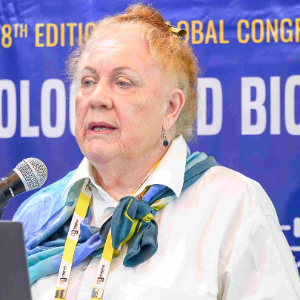Phytogeography
Phytogeography, an integral branch of biogeography, stands as a scientific endeavor dedicated to unraveling the intricate tapestry of plant species and vegetation across the Earth's vast expanse. This field goes beyond mere mapping, delving into the nuanced patterns and multifaceted factors that govern the spatial distribution of plants, providing a profound understanding of the dynamic relationships between environmental variables and the diverse tapestry of plant life. At its core, phytogeography takes into account a myriad of influential factors, including climate, soil composition, topography, and historical events, which collectively contribute to shaping the distinctive flora observed in different ecosystems. Through meticulous examination, phytogeographers gain insights into the adaptations and responses of plant species to the ever-changing conditions of their surroundings. A cornerstone of phytogeography lies in the exploration of dispersal mechanisms employed by plants. This encompasses not only natural processes such as seed dispersal by wind, water, or animals but also the profound impact of human activities, including agriculture and trade, on the movement and distribution of plant species. By understanding these migration and adaptation dynamics, phytogeography unveils the intricate stories of how plant life has evolved and adapted over geological time scales. The implications of phytogeography extend far beyond academic inquiry, permeating into crucial areas of ecological research, conservation initiatives, and land management. Armed with the knowledge garnered from phytogeographic studies, scientists and policymakers are empowered to make informed decisions aimed at protecting and preserving the rich biodiversity that graces diverse regions across the globe. This discipline serves as a compass for sustainable land use practices, helping navigate the delicate balance between human activities and the preservation of natural ecosystems. In essence, phytogeography stands as a beacon in our quest to comprehend and safeguard the planet's botanical heritage. By unlocking the secrets embedded in the distribution patterns of plant species, this discipline not only enriches our understanding of the natural world but also plays a vital role in shaping strategies for the conservation of biodiversity and the sustainable management of our planet's invaluable ecosystems.

Mohammad Babadoost
University of Illinois, United States
Mary Cole
The University of Melbourne, Australia
Valasia Iakovoglou
UNESCO chair Con-E-Ect, International Hellenic University, Greece
Satya S S Narina
Virginia State University, United States
Sara Hailemariam
Purdue University, United States
Midhat Mahboob
Lincoln University, New Zealand


Title : Exploring the genetic diversity in tannin-rich forages to explain the large intra species variability in tannin content
Selina Sterup Moore, Aarhus University, Denmark
Title : Isolation and functional properties of biomolecules of plants and its application
Balagopalan Unni, GEMS Arts & Science College (Autonomous), India
Title : Primed for the future: PGPR and the promise of sustainable, heritable crop resilience
Prashant Singh, Banaras Hindu University (BHU), India
Title : Revealing allelic variations in candidate genes associated with grain yield under salinity stress between two contrasting rice genotypes
Nisha Sulari Kottearachchi, Wayamba University of Sri Lanka, Sri Lanka
Title : Adaptive strategies of Aristida L. species across ecological zones of Pakistan: Linking soil characteristics with morphological and physiological traits
Iram Ijaz, University of Agriculture Faisalabad Pakistan, Pakistan
Title : Ethnobotanical survey and abundance of weeds in selected Manihot esculenta (cassava) Crantz farms in Osun state, Nigeria
Dada Caleb Mayokun, University of Ibadan, Nigeria